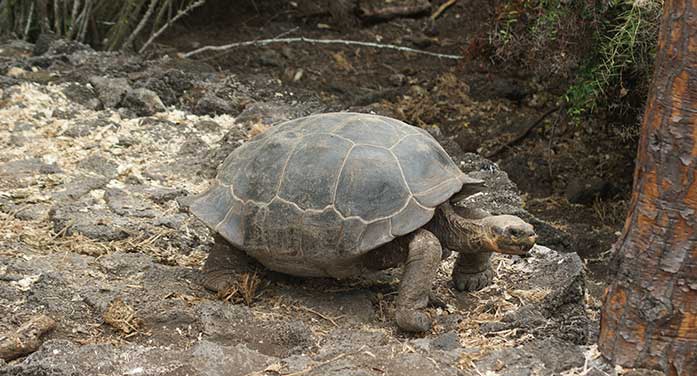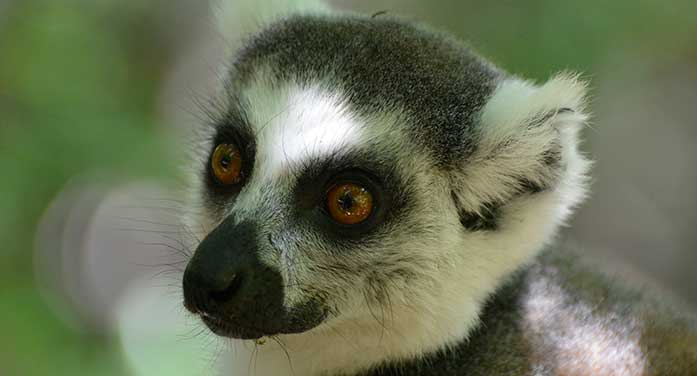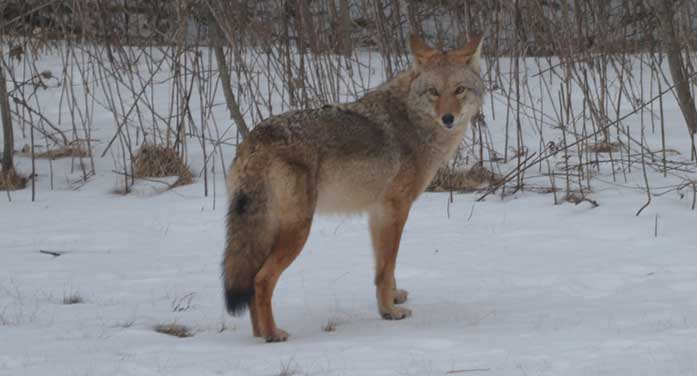
If climate change persists, tortoises will lose their food source and be forced elsewhere, seeking what is called a “niche habitat”
 Typically I note articles that cross my desk that report negative stories about nature. Historically, they didn’t emerge that frequently and nature, in general, was doing pretty well, despite some ongoing issues with overhunting, predator control, urbanization, pesticides and poaching.
Typically I note articles that cross my desk that report negative stories about nature. Historically, they didn’t emerge that frequently and nature, in general, was doing pretty well, despite some ongoing issues with overhunting, predator control, urbanization, pesticides and poaching.
I read and keep these stories because sometimes lessons can be learned by studying other people’s follies. Here are two of those stories:
There’s a significant risk to island-dwelling creatures as the Earth warms. Giant tortoises and lemurs are foremost in our minds when we think of exotic but threatened species. They will assuredly be impacted by climate change as they rely on what are called ecological niche habitats for survival.
For example, the tortoises are herbivores, feeding heavily on cacti and other unique plants. If the climate changes and the populations of cacti decline too rapidly, the tortoises need to go somewhere else where food persists or change their diet.
But their diet is so specialized that it’s virtually impossible for them to change quickly enough to survive. Combine this with relocation issues – since they can’t possibly move between islands to find new food sources – and the tortoises will perish if the food sources dry up.
Lemurs live in fragmented forests in Madagascar, and virtually every species is under threat of extinction to varying degrees. Again, many are food-specific herbivores. In their case, the habitats are so fragmented due to a consumptive society that the animals can’t move between them and their chances of survival are slim.
Scientists postulate that many marine and mountain-dwelling species will go extinct if our planet warms by 3C above pre-industrial revolution levels.

Lemurs, which live in fragmented forests in Madagascar, are also threatened by extinction.
To draw these conclusions, scientists (who published their work in the journal Biological Conservation) analyzed data linked to 270 biodiversity hotspots around the globe. The modelling suggests that a staggering 84 per cent of endemic montane species and about half of endemic marine species will go extinct. Species are endemic if only found in one place, such as an island, mountain range or single country.
These declines are due in part to the factors I mentioned above. But when coupled with small populations on often isolated islands with limited habitat options, the outcome is dire.
Stories about predator control programs from every part of the world are rampant, and the outcomes are devastating for the prey and predator. Yet we continue to kill predators at alarming rates – often to satisfy hunters’ needs or unnecessarily protect livestock.
Grey wolves once roamed North America from coast to coast to coast. In the 1950s, they were almost eliminated from the lower 48 U.S. states. But due to intensive wildlife management programs, their numbers rose to about 7,500 by 2020.
Their recovery deemed successful, all legislative safeguards were removed in 2019 by the United States Fish and Wildlife Service. Their control, protection and management were therefore passed from federal into state hands. The outcome has been devastating.
Michigan and Minnesota plan wolf-specific hunting campaigns in 2022, while Montana is permitting snaring of wolves to control them. Idaho has passed a law that will allow the cull of 90 per cent of the state’s wolf population by any means.
A story in Scientific American reports that in Wisconsin, hunters killed 218 wolves (21 per cent of the state’s population of wolves) in three days when a hunt was opened there. Add natural deaths, unreported kills and poaching, and the number is much higher and the outcome gloomy for the wolves. If culls continue, the wolf population in Wisconsin will likely drop to about 300 animals total after the next hunt in 2022.
And stay tuned to hear about chronic wasting disease, which will likely decimate the white-tailed deer populations in areas where wolves have been removed. Numerous scientific studies have proven that this fatal disease is primarily held in check by wolves selectively killing infected deer.
Add to this the coyote-hunting contests that many states and even Ontario support, and the outcomes are devastating. Hunters go out in teams as part of these hunts, kill as many animals as possible, and get rewarded for it.

Coyotes are unwitting participants in coyote-hunting contests held in some states and Ontario, ostensibly to protect livestock. Such initiatives have been disastrous for both predator and prey species
Sadly, the well-being of the animals and the benefits they provide to the balance of nature are never factored in when these events occur. Across North America, these hunters remove thousands of top-level predators from the equation and then wonder why deer populations are weaker.
Stories like these are now commonplace. It’s hard to be proud of ourselves as the protectors of Earth when we do things like this.
Geoff Carpentier is a published author, expedition guide and environmental consultant. Visit Geoff on LinkedIn, Instagram and Facebook. For interview requests, click here.
The opinions expressed by our columnists and contributors are theirs alone and do not inherently or expressly reflect the views of our publication.
© Troy Media
Troy Media is an editorial content provider to media outlets and its own hosted community news outlets across Canada.

